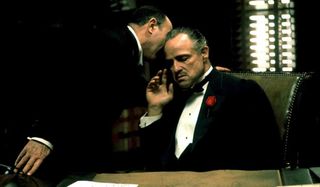

It’s a sluggish movie with nothing to say about the moral rot of the powerful that the first two parts didn’t say much better, and it’s weighed down by Al Pacino’s fairly inert turn as Michael Corleone, a protagonist who, to be fair to Pacino, does spend the lion’s share of the film trying his best to do nothing. Watched as the third installment of a series that had already produced two of the best American films ever made, The Godfather Part III was (and is) a crushing disappointment.
#THE GODFATHER 2 EXPLAINED HOW TO#
It was hard to know how to approach The Godfather Part III back in 1990. Over and over on the commentary track, Coppola compares himself to Michael Corleone: the ruthless genius in repose, manipulated by his enemies. Coppola laments how his power in Hollywood had diminished in the 1980s to the point where he felt he had to make another Godfather, even though he didn’t really want to, and he complains that Paramount Pictures steered him away from making the purely elegiac Godfather Part III he would’ve preferred.

Over all this, Coppola delivers one of his most fervent “poor me” monologues, which anyone who’s followed the director’s career will have heard him spout dozens of times before. Coppola had his most important collaborators back in place for the 1990 Godfather, including production designer Dean Tavoularis (giving an opulent world a lived-in feel) and cinematographer Gordon Willis (making sure everything looks simultaneously burnished and shadowy). It’s also easier to pay attention to how The Godfather Part III looks, which matters a great deal, because on a strictly visual level, the third Godfather is as magnificent as the first two. All the movie’s leaden expository dialogue disappears-as does the distractingly flat performance of Coppola’s daughter Sofia in a pivotal role. The Godfather Part III becomes an entirely different film when the original soundtrack is subbed out for Francis Ford Coppola’s DVD commentary.


 0 kommentar(er)
0 kommentar(er)
